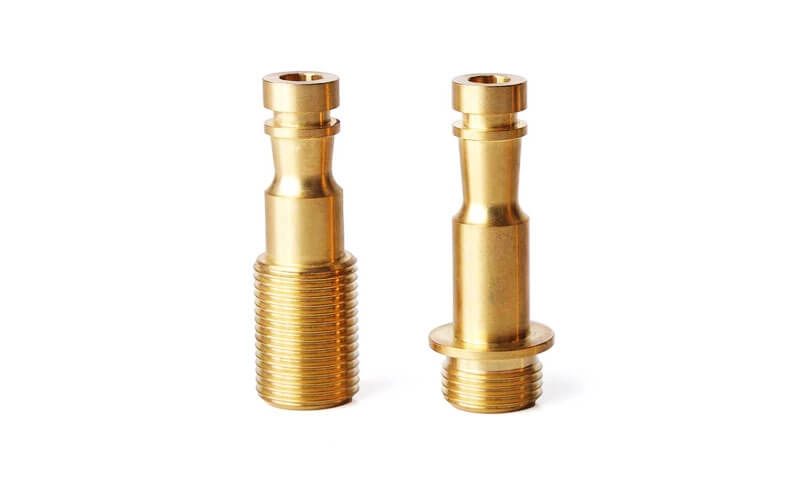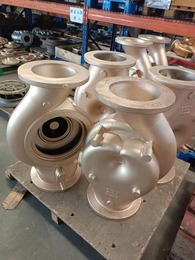Discover if brass is magnetic, why pure brass repels magnets, common alloy myths, and how to test brass authenticity for your projects.
Understanding Brass Composition and Why It’s Mostly Non Magnetic
Brass is a metal alloy primarily made of copper and zinc. Sometimes small amounts of other metals like lead, tin, or iron are added to tweak its strength, color, or workability. The exact mix can vary depending on the intended use, but the core components remain copper and zinc.
So why is brass mostly non magnetic? This comes down to its composition and structure. Copper and zinc are both what scientists call diamagnetic materials. That means they create a very weak magnetic field in the opposite direction when exposed to a magnet, effectively repelling magnetism slightly rather than attracting it. This property is why most brass alloys don’t stick to magnets like iron or steel do.
Magnetism mainly comes from unpaired electrons in a metal’s atomic structure. Since copper and zinc have paired electrons, brass lacks the typical magnetic response. However, this only applies to pure or standard brass alloys without magnetic impurities mixed in.
Understanding this basic science helps explain why brass parts, like those used in electronics, plumbing, or decorative fixtures, generally won’t interfere with magnetic fields or pick up magnetic debris. This diamagnetic quality is a key reason brass remains popular in many technical and aesthetic applications.
When Brass Seems Magnetic Common Causes and Myths Busted

Sometimes brass appears magnetic, but that usually comes down to a few common reasons. First, impurities or variations in the brass alloy can contain tiny amounts of iron or other magnetic metals. These magnetic impurities can fool your magnet test, making brass seem magnetic when it really isn’t pure brass.
Another trick comes from brass plated steel items—these are common in hardware stores. They look like brass but have a steel core underneath, which is magnetic. This sneaky plating makes the whole piece respond to magnets even though the surface is brass.
There are also some myths around brass becoming magnetic due to temperature changes or special processing. In truth, normal heating or cooling doesn’t make brass magnetic, and there’s no special brass alloy that’s truly magnetic by design.
So when brass seems magnetic, it’s almost always impurities, plating, or misunderstanding—not a property of genuine brass.
How to Test If Your Brass Is Truly Non Magnetic DIY Guide

Testing if your brass is truly non magnetic is simple and something you can do at home without fancy tools. Here’s a quick DIY guide to help you confirm the real deal:
- Use a Strong MagnetGrab a strong neodymium magnet—these are easy to find online or in hardware stores. Bring it close to the brass piece and see if there’s any pull or attraction. If it sticks firmly, you might not have pure brass.
- Check for Slight AttractionSome brass alloys might show a very weak pull because of magnetic impurities like iron or steel mixed in. If your magnet barely sticks or feels a mild pull, suspect alloy variations or contamination.
- Look for Brass PlatingIf a magnet sticks to the surface but the metal underneath feels different, you could be dealing with brass-plated steel—a common trick in some hardware. Try tapping or scratching lightly in a hidden spot to see if there’s a steel base.
- Perform the Spark TestCarefully grind a tiny bit of the metal on a grinding wheel or file. Real brass produces short, bright sparks, while steel or iron-based alloys show longer, branched sparks. This can help spot magnetic impurities.
- Use a Metal Detector AppSome smartphone apps combined with a magnetic sensor can give a rough idea of the metal’s magnetism. Not foolproof but handy for quick checks on the go.
- Check for Eddy CurrentsIf you have access to electrical tools, eddy current testers can differentiate non magnetic metals like brass by how they resist changes in magnetic fields—but this is more advanced.
Remember, real brass is mostly diamagnetic, meaning it won’t attract magnets. If your test shows magnetic behavior, there’s a good chance the brass is mixed or plated. This simple testing helps you avoid fakes and ensures you’re working with genuine brass, especially important if your projects or repairs call for non magnetic metals.
Brass in Action Non Magnetic Advantages for Real World Projects
Brass is widely valued for being mostly non magnetic, which makes it a go-to choice in many practical applications. Its diamagnetic properties mean it won’t interfere with magnetic fields, which is key in environments like electronics or precision instruments where magnetism can cause issues.
Ideal Uses in Non Magnetic Environments
- Electronics and Electrical Components: Brass parts won’t cause eddy currents or magnetic interference, making them safe for circuit boards and connectors.
- Marine and Plumbing: Non magnetic brass resists corrosion and won’t attract metal debris, helping maintain system integrity.
- Decorative Hardware: Since it’s non magnetic, brass keeps its polished look without attracting iron filings or rust particles.
When Slight Magnetism Matters and When to Choose Alternatives
Sometimes small amounts of magnetism slip in due to impurities or alloy variations. If your project demands zero magnetic interference—like in MRI machinery or sensitive scientific instruments—it’s better to opt for certified non magnetic metals or alloys specially formulated to be completely magnet-free.
Eco Friendly Angle Recycling Brass Without Magnet Sorter Headaches
Recycling brass is easier than many metals because it’s mostly non magnetic. Scrap yards can separate brass from steel and other ferrous metals using magnets, reducing contamination. This eco-friendly sorting reduces waste and improves recycling returns, which supports greener manufacturing cycles.
The non magnetic nature of brass isn’t just a technical detail; it directly benefits everyday projects by ensuring reliable, interference-free performance and easier sustainable recycling.

